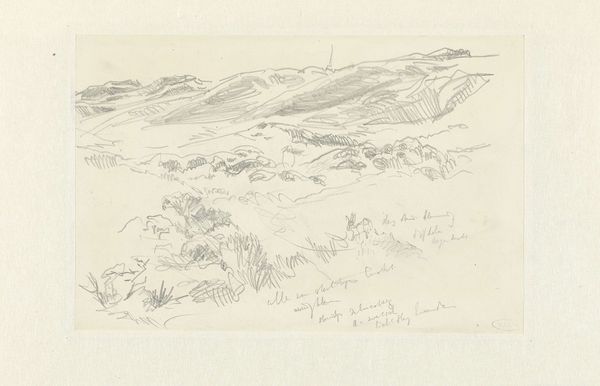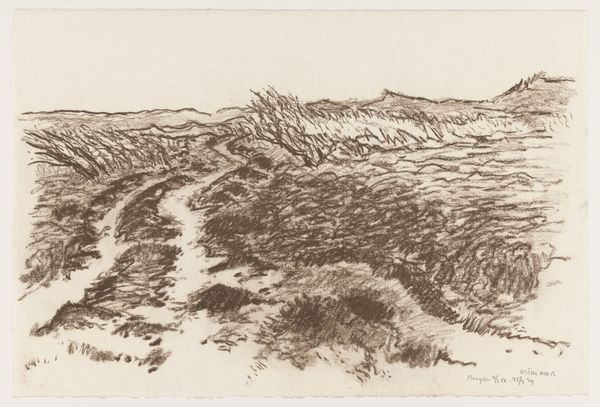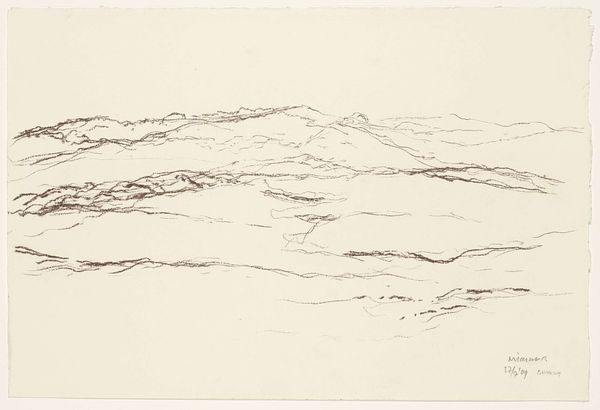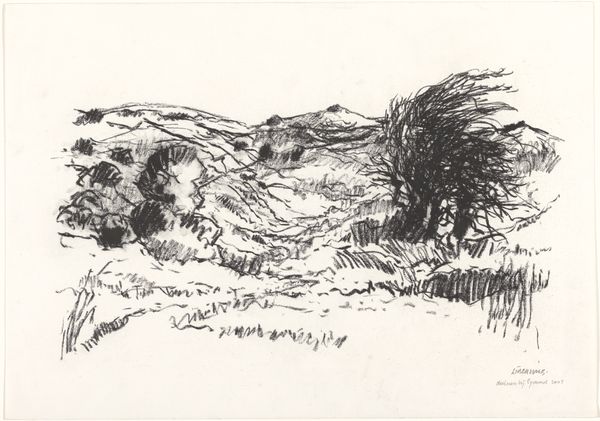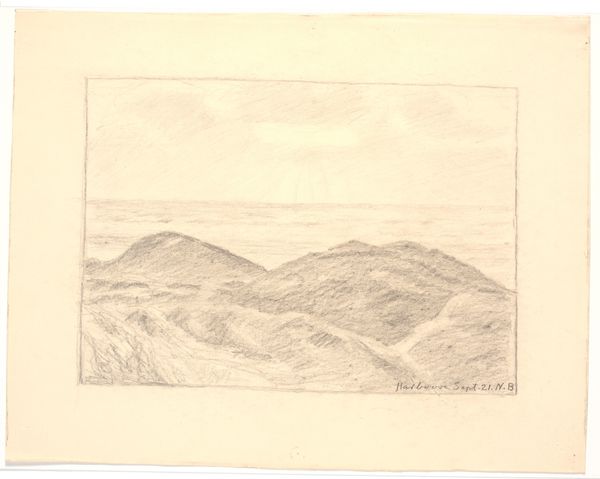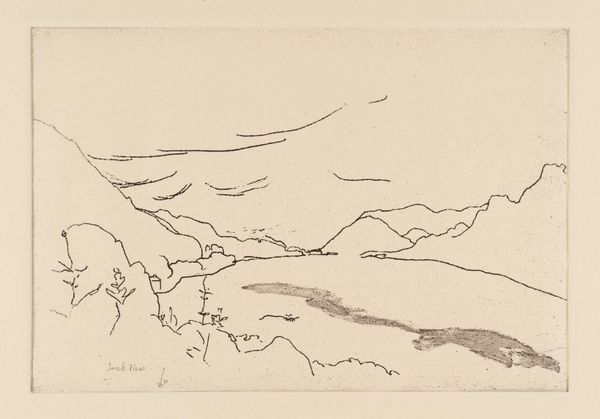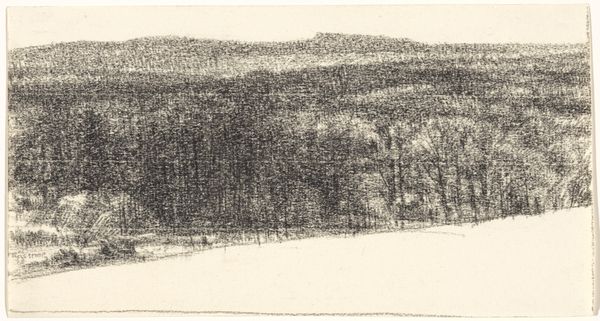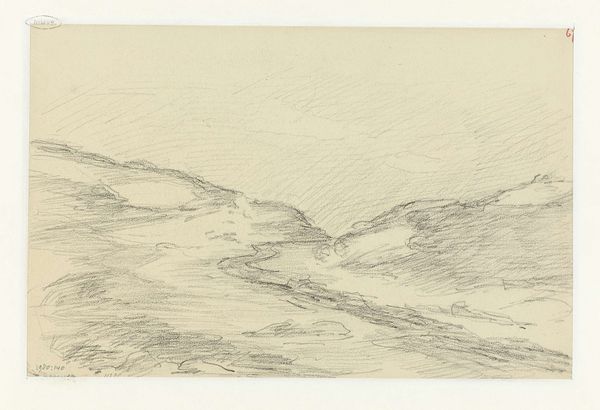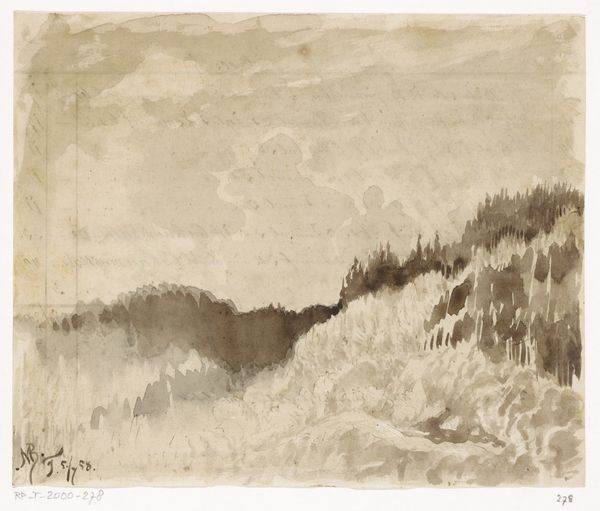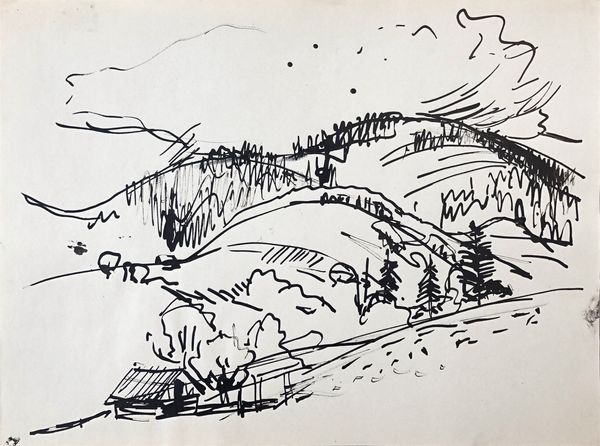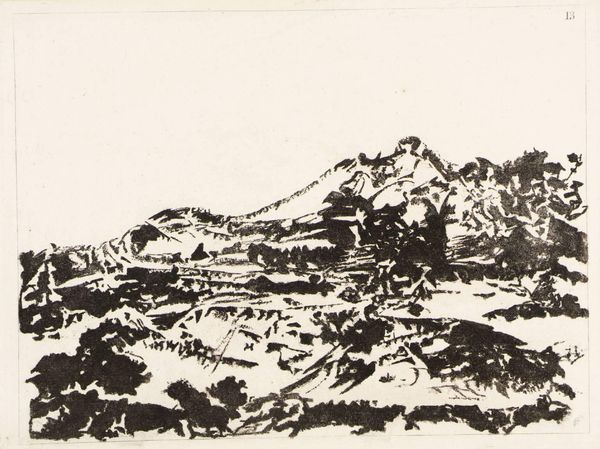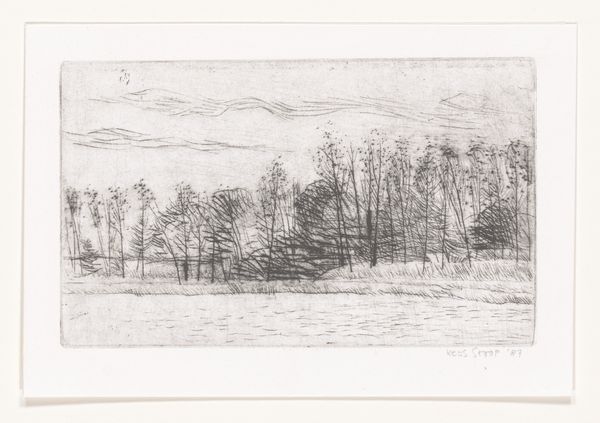
graphic-art, print, woodcut
#
graphic-art
#
ink drawing
# print
#
landscape
#
woodcut
#
line
#
monochrome
Dimensions: height 345 mm, width 484 mm
Copyright: Rijks Museum: Open Domain
Editor: This is "Duinlandschap" by Dirck Nab, created in 2005. It's a black and white woodcut print, and I’m struck by its simplicity. It feels almost like a quick sketch, but the landscape still comes through really clearly. What stands out to you when you look at this print? Curator: Well, I immediately consider the labor and the material properties that constitute its essence. We see stark, bold lines achieved through the specific act of carving into wood. How does that physical process shape our perception? It’s not a smooth, continuous tone; instead, it is broken down and reconstituted via the material reality of the woodcut. Editor: I hadn't thought about that before! So the texture of the wood actually dictates part of the aesthetic. It makes me think about mass production too, as it is tenth out of ten prints, meaning it can be consumed by the masses. Curator: Precisely. And how does the labor of that process become a value? The print as a medium is, fundamentally, a repeatable one, connecting to broader economic and social practices around art consumption. Also note the landscapes of Nab, how the landscapes of the periphery are worthy of note, instead of traditionally more valued landscape artworks with prominent buildings for instance. Editor: So you're saying it's not just about the image, but also about the whole system of production and how it reflects certain societal values? Curator: Absolutely. And consider the implications of limiting the prints to ten - a paradox where mechanical reproducibility gets limited artificially. What purpose does that choice serve, do you think? It adds another layer to how we see labor and art, what its context is. Editor: I guess it makes the prints more ‘valuable’ and scarce for collection purposes… almost contradicting its potential for widespread availability! That's given me a totally new way of considering printmaking. Thanks for pointing all that out. Curator: It has been enriching to think of the context together. Considering production value in its making, value as an asset, in addition to value in context adds nuances to the work.
Comments
No comments
Be the first to comment and join the conversation on the ultimate creative platform.
